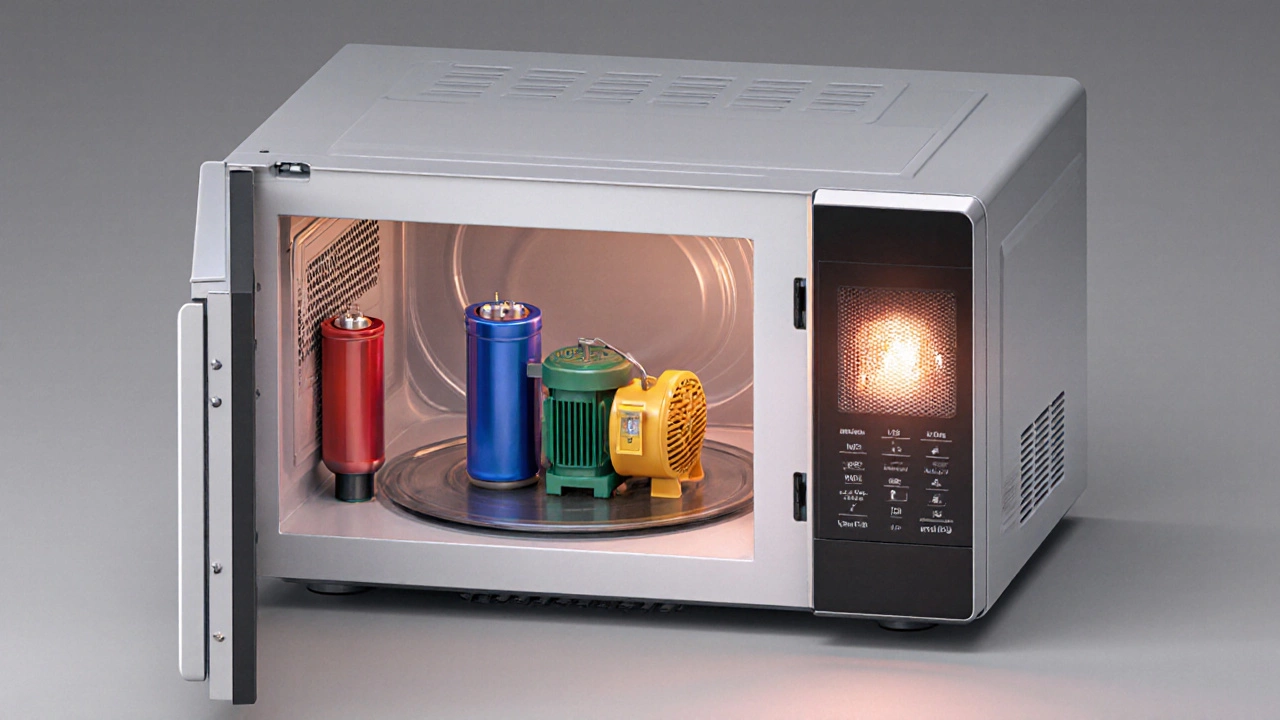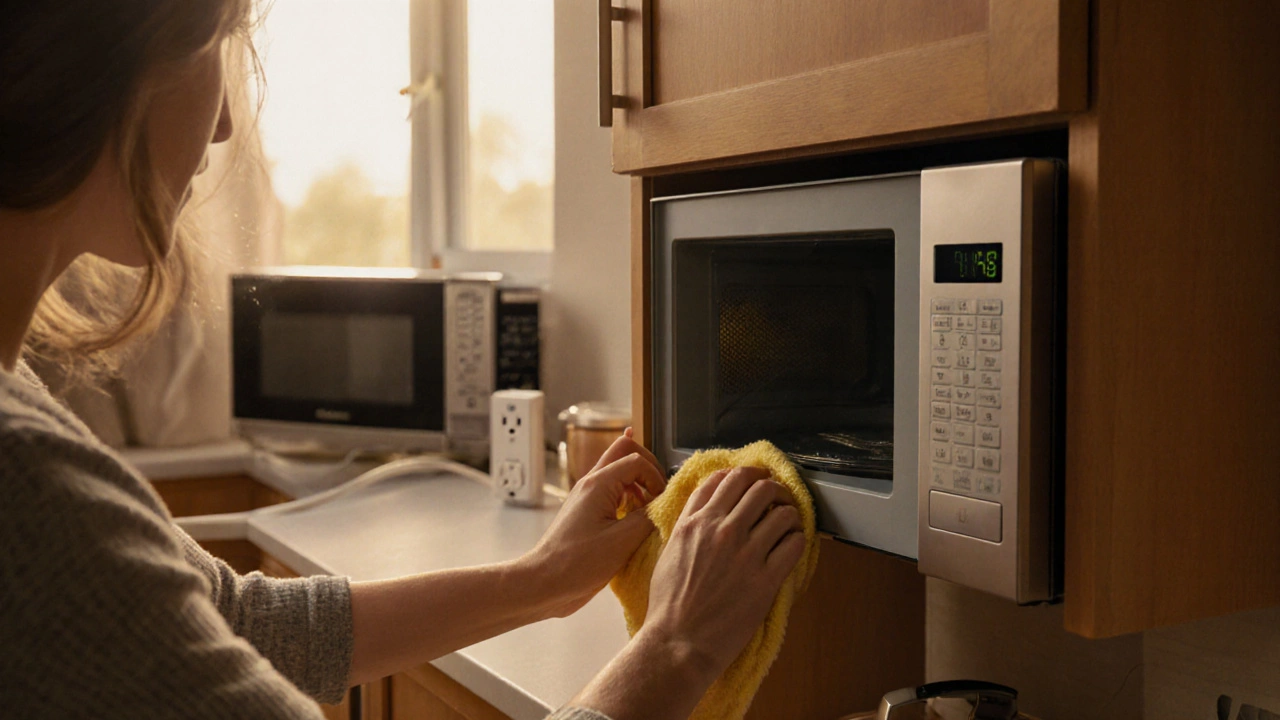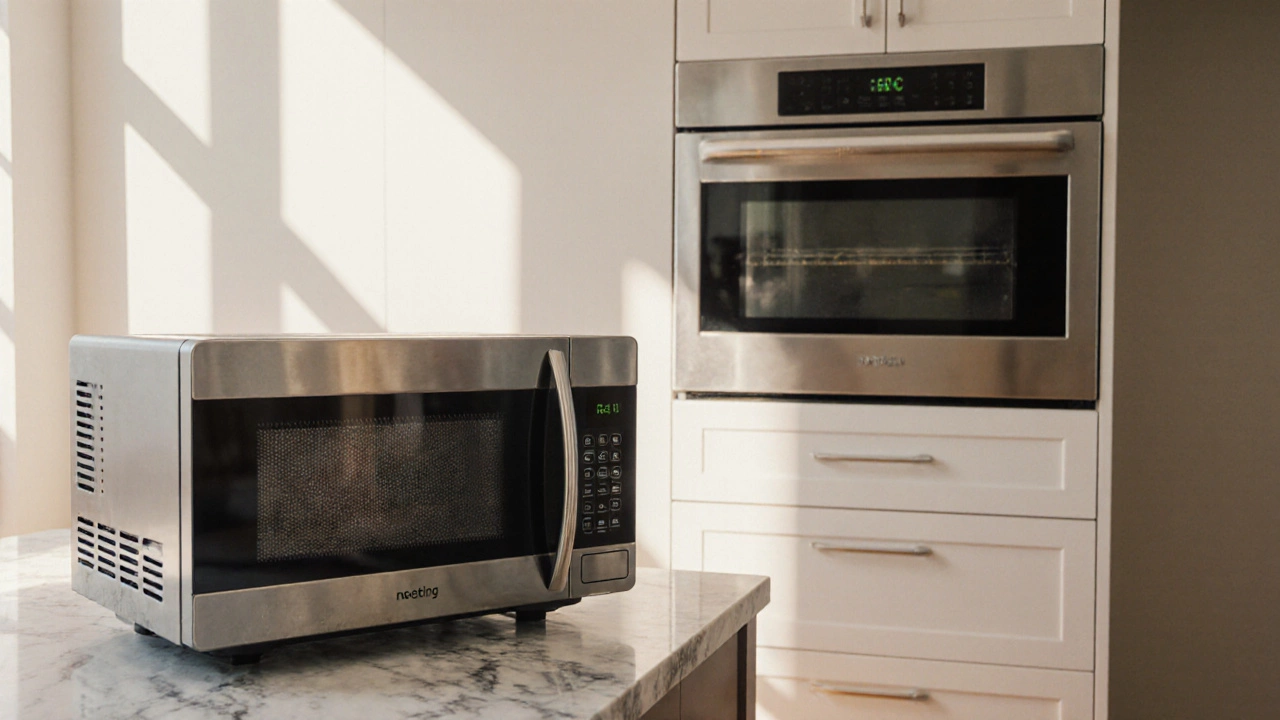Microwave Lifespan Calculator
Microwave Lifespan Calculator
Estimate how long your microwave is likely to last based on usage patterns and maintenance habits.
When you wonder how long a microwave is a kitchen appliance that uses a magnetron to generate microwaves for cooking should last, the answer hinges on design, usage habits, and how well it’s cared for.
Typical Longevity Numbers
Industry surveys and warranty data point to an average service life of microwave lifespan between 8 and 12 years for most residential units. Counter‑top models tend to cluster around the lower end of that range, while built‑in or over‑the‑range units, which often have heavier‑duty components, can push toward 15 years.
Key Components That Dictate Life Expectancy
Understanding which parts wear out helps you predict when a microwave is nearing the end of its useful life.
- Magnetron is the core RF generator that creates the microwaves that heat food. It runs at high voltage and temperature, so after about 9,000 to 12,000 heating cycles it can lose efficiency or fail outright.
- Capacitor is an energy‑storage component that supplies the magnetron’s power surge. Capacitors degrade with heat and humidity; most last roughly 10 years before leakage or reduced capacitance becomes an issue.
- High‑Voltage Transformer is the device that steps up mains voltage to the levels needed for the magnetron. A well‑ventilated unit can keep this component healthy for 12‑15 years, but excessive dust can cause premature overheating.
- Turntable Motor is the small motor that rotates the glass plate for even cooking. Frequent use can wear bearings; most turntable motors survive 8‑10 years before becoming noisy or stalling.
- Door Interlock is the safety switch that disables microwave generation when the door is open. This safety feature usually lasts the lifetime of the appliance, but failed interlocks are a common reason for service calls.

Factors That Accelerate Wear
Even the toughest appliances can age faster under certain conditions. Here are the main culprits:
- High Power Usage - Running the microwave at full power for long periods (e.g., defrosting large items) generates more heat inside the chassis, stressing the magnetron and capacitor.
- Frequent Opening - Each door cycle activates the interlock and adds mechanical stress to hinges and the turntable motor.
- Poor Ventilation - Microwaves rely on vent slots to expel heat. Stacking dishes or covering vents can trap heat, leading to premature transformer or magnetron failure.
- Power Surges - Unstable electricity can damage the high‑voltage capacitor or transformer. Using a surge protector can mitigate this risk.
- Water Damage - Spills that seep into the control board or wiring cause corrosion, often resulting in erratic performance or total shutdown.
Signs Your Microwave Is Nearing the End
Spotting trouble early can save you time and money. Watch out for these red flags:
- Cooking times suddenly increase - the magnetron may be losing power.
- Uneven heating or cold spots - the turntable may be malfunctioning or the magnetron isn’t distributing energy evenly.
- Strange noises - buzzing, humming, or grinding often point to motor or transformer issues.
- Display flickers or error codes - the control board could be failing due to moisture or heat.
- Door won’t latch or stays locked - a faulty interlock is a safety risk and usually requires professional service.
Maintenance Tips to Extend Life
Simple habits can push a microwave well beyond the average 10‑year mark.
- Keep the interior clean. Wipe spills promptly with a damp cloth; residue can trap heat.
- Never operate the microwave empty. Running it without food can overheat the magnetron.
- Allow space around the unit. Ensure vent slots are not blocked by cabinets or dishes.
- Use a surge protector. This guards the high‑voltage components from power spikes.
- Check the door seal regularly. Replace a cracked gasket to maintain proper interlock function.

Repair vs. Replace: When Is It Worth It?
Repair costs vary by component. A magnetron replacement typically runs $120‑$180 in parts plus labor, while a faulty door latch may be $40‑$70. If the total repair bill exceeds half the price of a comparable new unit, replacement usually makes more sense.
Consider these decision points:
- Age - If the unit is under 7 years and the issue is minor (e.g., turntable motor), repair is often economical.
- Energy Efficiency - Newer models meet stricter energy standards, saving about 10‑15% on electricity. Upgrading can offset higher upfront costs over time.
- Feature Needs - If you desire convection functions or sensor cooking, a modern replacement adds value beyond simple microwaving.
Comparing Lifespan by Microwave Type
| Category | Average Lifespan | Key Wear Point | Typical Repair Cost |
|---|---|---|---|
| Counter‑top | 8‑10 years | Magnetron, Turntable | $120‑$180 |
| Over‑the‑range | 10‑13 years | Ventilation system, Transformer | $150‑$220 |
| Built‑in | 12‑15 years | Door interlock, Control board | $100‑$160 |
Frequently Asked Questions
How many years can I expect my microwave to work without issues?
Most household microwaves last between 8 and 12 years. Proper maintenance can stretch that to 14‑15 years, especially for built‑in models.
What’s the most common reason microwaves fail?
The magnetron is the biggest culprit. It degrades after thousands of heating cycles, leading to reduced power or total loss of function.
Is it cheaper to replace a microwave than to repair it?
If the repair bill exceeds about 50% of the price of a new, comparable model, replacement is usually the smarter financial move.
Can I use a surge protector with my microwave?
Yes. Plugging the microwave into a quality surge protector helps shield the high‑voltage components from spikes that could shorten its lifespan.
Do I need professional service for a faulty door interlock?
Because the interlock is a safety mechanism, it’s best handled by a qualified technician. DIY fixes risk exposing you to microwave radiation.





